|
|
||||
Soon we may have hackable transmitters and receivers on every roof…When storms hit Adelaide last November the first thing the AEMO did was ask people to switch off their own solar panels so they didn’t swamp and crash the fragile wounded grid. Some 400MW of rooftop PV was also remotely shut down through the combination of smart inverters and voltage controls. Imagine if a foreign power could launch a cyber attack — one that switched a large energy source on or off at the wrong moment? Last year “a hacker gained access to PV systems in the Netherlands that were operated via a monitoring tool from China’s Solarman“. That meant a Dutch government agency was suddenly called on to investigate and report on the risks. According to PV magazine: “The hacker was able to view the personal data of Dutch customers, create new customers and delete existing users,” reported Tweakers. “He was also able to find out how much electricity customers’ solar panels generate via GPS coordinates, and download, adjust and upload inverter firmware.” In May this year a report by the Dutch National Digital Infrastructure Inspectorate (RDI) found that many inverters didn’t comply with requirements and could cause interference with other electrical equipment — indeed five of the nine inverters they tested may cause interference, and nine out of nine were judged to be “noncompliant”. InnovationsOrigins.com reports that “radio or wireless tags to open doors, could be affected and possibly function less well or not at all. Even aviation and shipping may be affected.” Really? Really serious’ problems cybersecurity breaches pose in Australia’s DER near futureBella Peacock, PV Magazine, June 27th “In about two to three years I think there will be a critical mass [of controllable systems].” If Australia roughly installs around 350,000 rooftop solar systems per year, depending on how many states introduce control mandates, this could see Australia have anywhere from 750,000 to over a million controllable systems installed within three years. “So we are talking about a massive increase in controlled devices just looking purely at solar,” [Wattwatcher’s Chief Innovation Officer, Grace Young,] said. Cyber attacks could even go unnoticedThe Australian Energy Market Operator (AEMO) has pointed out that cyberattacks in the DER space could easily go unnoticed (See the ProjectEdge Report on cyber security.) Malicious interests could also gain access to market information that they could profit from. And as it happens, two of Australia’s major energy Gentailers are owned by Chinese firms — Alinta Energy (Chow Tai Fook Enterprises) and Energy Australia (China Light and Power Company). We banned the phones but will allow the transmitters on millions of homes… China’s spy threat to our solar energy gridCameron Stewart, The Australian “If companies like Huawei are not safe to be the backbone of our telecommunications network then they can hardly be safe as the backbone of our new electricity grid,” Senator Paterson told The Australian. “Yet that’s exactly what’s happening under the Albanese government’s rush to renewables with no cyber security mitigations.” “We cannot afford for our electricity grid to be riddled with exploitable cyber security vulnerabilities in the most dangerous strategic environment since World War II. We know that critical infrastructure networks like power are of great interest to signals intelligence agencies in foreign authoritarian states, including China.” It has been done before… Energy systems, and especially electricity grids, have increasingly been a target in global conflicts, with Russian-affiliated groups launching cyber attacks on energy utilities in Ukraine and in other NATO countries since Russia‘s invasion of Ukraine. Imagine the power to randomly annoy people with intermittent, hard to detect problems, that drain productivity, or profits, or freeze our smelter pot lines, or increase profits of some companies while making others less competitive. It may not look like an act of war, but in a death by a thousands cuts, it might send companies and events looking for better, more reliable energy in a foreign land, or increase bankruptcies. It might hamper national productivity or come at the worst possible moment.
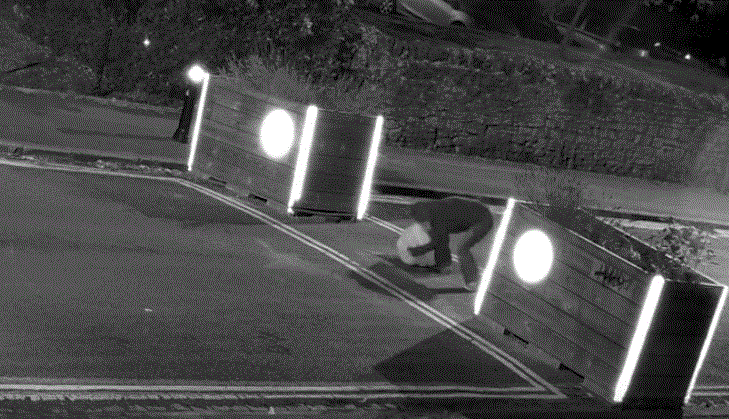 Late night road protestor pouring concrete in a former bollard-hole | Youtube By Jo Nova Build Back Worse suffers a set-backIt’s hard to believe someone thought that adding artificial blockages to roads would free people from their vehicle-addiction. As if making car trips artificially long, circuitous and inconvenient would teach people to love walking? It’s part of the 15 minute city plan, where everything was supposed to be within a heavenly short walk from home, so we could give up cars, save the planet, change the atmosphere and get fit too. But the Deplorables didn’t like it. The idea of a Low Traffic Network (LTN) sounded so apple-pie. Everyone wants fewer cars on the road. So when pollsters asked deliberately ambiguous questions, people would say “yes” they liked the idea. But living with LTN’s wasn’t much fun when it turned out it was their car the overlords wanted to get rid of. And so the protests and petitions began. Under the cover of darkness, people set bollards on fire, attacked them with chainsaws, and even poured concrete in the anchor holes so it was harder to replace them. But what really seems to have got the attention of politicians is when their own party splits and the renegades win. As Tim Abrahams at UnHerd describes it, politicians are backing away quickly now after a couple of safe Labor council seats went to Labor rebels who left the party and ran on “pro-motorist” platforms. The revenge of Britain’s motoristsTim Abrahams at UnHerd There is a sense that politicians are increasingly waging a “war on cars”. Measures include road filtering, to give priority to low-carbon methods of transport, and placing extra charges on polluting vehicles, in a push towards net zero. The shift is prompting anguished debate and splits within parties. Earlier this month, Labour lost one of its safest council seats in the country to a former party member-turned-independent who stood opposed to the imposition of LTNs across Newham, in East London. Last autumn, former Labour politician Lutfur Rahman was returned as mayor of Tower Hamlets, also in East London, deposing the party’s chosen incumbent, on a pro-motorist platform; one of his first acts was to axe a newly installed LTN and demand a review of the others across his borough. In Oxford City, large swathes of Labour’s local party have defected to an independent group fighting the LTNs and the traffic schemes that will supersede them; in March, its official candidate in the Littlemore ward came within an inch of being beaten by such an independent. The idea is gathering a bad smell so fast one Liberal Democrat in Oxford (the “Cabinet Member for Highway Management“) is now telling Tim Abrahams that the LTN’s weren’t his idea and it’s “not a core scheme”. As Abrahams tells it, the Liberal Democrats are part of the “rainbow coalition of progressive parties” who are in charge at Oxford — and it was something they once promoted. It’s quite the backflip. Perhaps the best news is that bollards are going at Oxford: Three years after traffic filtering was trialled, the bollards and planters are to be replaced by other forms of traffic calming, such as bus gates monitored by traffic cameras and a workplace car parking levy. The message has got through to the top. On a Federal level the Transport Secretary even called last week for councils to “review unpopular anti-car schemes“. Mark Harper said he had stopped government funding for project “that are about… banning cars or making it difficult for motorists”. Higher costs, less spare time, more gridlock and less equity: Who could have seen that coming?What seems the most astonishing is that the whole plan worked like organised government-vandalism — the tyrants were Building Back Worse. They weren’t building new infrastructure, they were ruining perfectly good roads. They reduced options, curtailed freedoms, and somehow our lives were supposed to get better? But people could always have walked from point A to B, they just preferred to drive. There were no efficiency gains, no better choices or new rail lines, there was just less. And not surprisingly, longer trips meant more gridlock not less, more emissions, and the costs of extra travel meant even getting a tradie to do a house-call became much more expensive: At a political level, there is some irony in the fact that europhile supporters of LTNs have not heeded the lesson of the gilets jaunes protests in France — namely, that blue-collar workers will not be made sacrificial lambs to environmental policies. Idrees Mohammed, managing director of Oxford Lettings, a property management agency, told me that electricians now charge 60% more for a call-out into the Cowley LTN because it takes so long to get to it. Amir Steve Ali, who works in a takeaway in East Oxford, recently delivered a petition against LTNs to Downing Street with more than 30,000 signatures. “You’re trying to keep some of the roads clean-air, pollution-free — but you’ve just chucked your rubbish next door, where others are now facing gridlock,” he says. “Where’s the justice in this?” It’s almost like the aim was never to serve, nor to change the weather, just to keep the riff-raff off the road. The battle is far from over, but it’s nice to get a win. It is worth protesting. Read it all at UnHerd.
Does the planet matter or doesn’t it?Today the headlines read “As the world sizzles, China says it will deal with climate its own way“, as if it made sense that the planet could be burning up and the largest emitter was clearly steaming ahead anyway. But no one got too upset in the Washington Post, or anywhere else either. From a carbon-believer’s point of view this should be the main game, the big crisis, the drama to launch a thousand protests and fund-raisers. But there are no encampments outside the Chinese embassies, no one is calling for boycotts on Chinese goods “until they act”, and no people are gluing themselves to wharves to stop “the boats of doom” loading and unloading. China’s intentions are pretty clear:
China’s output of carbon dioxide is set to reach a new record high in 2023. It grew 4 percent in the first quarter this year alone. Apparently China is committed to deadlines but not to a path, or a tempo, or a public plan, or any kind of transparency: China remained “unwaveringly” committed to reaching its peak in carbon emissions before 2030 and becoming carbon neutral by 2060, he told them this week, according to the official People’s Daily on Wednesday. “But,” Mr. Xi added, “the pathway and means for reaching this goal, and the tempo and intensity, should be and must be determined by ourselves, and never under the sway of others.” China is effectively saying, it has a secret plan, “Trust us”If China has any plan at all for “carbon neutrality” it’s to go nuclear as fast as it can. It will likely overtake the US as the largest nuclear power nation in the world before 2030. But if this was the plan, why keep it a secret? Is China afraid the West will realize they should build nuclear plants too, or is it because there is no plan at all? After all, China is still building two new coal plants every week. Who believes they are constructing 100 coal plants a year but are planning for emissions to start falling consistently and meaningfully in less than seven years? Naturally, it’s Donald Trump’s fault:John Kerry flew to China to chat and came home with nothing but said the talks were “I think, very productive”. And The Washington Post spent the rest of the article reminding the rest of us how bad climate change will be without a single word in admonition toward the Sino contribution. The New York Times was even worse, making excuses for China and blaming, who else? Xi Says China Will Act on Climate Goals at Its Own PaceLisa Friedman and …Yet while China has built more wind and solar power than the rest of the world combined, and is on track to double its green energy capacity by 2025, the Chinese government has resisted calls to bolster its climate targets or stop the permitting of new coal-fired power plants. There is also lingering suspicion in China that the United States could turn its back on its climate promises under a future administration, as it did under President Trump, who pulled the United States out of an international climate agreement and promoted coal growth. “The Chinese also want to see results from the U.S. to believe it will deliver,” said Deborah Seligsohn, an assistant professor of political science at Villanova University who is based in China. “It’s very difficult for China to manage that confidence deficit if the most important relationship for China — the U.S.-China relationship — is in free fall,” said Evan S. Medeiros, a former director for China on the National Security Council who now teaches at Georgetown University. China, the Media, the activists, the UN — none of them act like CO2 matters — every one of them make choices that show CO2 is just the tool to accomplish something else. It’s fame, or sabotage, or power and control, but it isn’t “the climate”.
The Commonwealth is the largest cultural union of nations across the globe. It includes one third of the world’s population in a group of 56 nations with 2.4 billion people. It could also be the largest trading block in the world, if only member nations wanted it to be that way. And who wouldn’t — well, obviously the EU and the Chinese Communist Party wouldn’t. For them, The Commonwealth is a threat, a club they can’t control, a sleeping giant. It’s kind of an inverse “Belt and Road” — but one that spread democracy and human rights. Maybe its nothing, but Dan Andrews (premier of Victoria) who signed up to host the 2026 Commonwealth Games, then abruptly sank it, also once signed the state up for the Belt and Road program, which the Federal government blocked. So we have to ask — who benefits from the shock announcement to cancel the Commonwealth Games? Why suddenly was an athletic carnival not worth doing for anything less than $7 billion dollars? As The Australian points out, The Gold Coast hosted the Games in 2018 for $1.8 billion dollars, and Birmingham managed it in 2022 for meager $1.5 billion. Yet suddenly Victoria can’t afford it? Damaging the Commonwealth Games is a salvo in the culture war that seeks to destroy the heritage events that remind us of our natural allegiances, shared values and history. These are our friends and allies, and while it may seem a distant claim, as many as 1.7 million people died defending Commonwealth nations in World War I and II. The history is rich. The same culture war that destroys our statues and heroes is coming for our sport. The Commonwealth Games is a free market in athletic ability, a merit based competition. People can’t buy medals, or schmooze their way onto the podium, and the winners may use their fame to question authority. The beneficiaries potentially include both domestic and foreign interests that do better when the old pillars of free markets, free speech, patriotism and competition are erased. So add local status seeking bureaucrats as well as the WEF and UN. The Commonwealth Games is another public town square where ideas get put on trial.We need these shared experiences. Far from being irrelevant entertainment, these kinds of public competitions are exactly the kind of tests that ruin fashionable but silly ideologies, like for example the idea that men can become women by thinking it to be so. Sporting codes are waking up as people see the absurdity of former male athletes winning the women’s gold medals. Just in the last few days, the Worlds Cycling body banned people who have been through male puberty from competing against women. That came after a transgender athlete became the first openly transgender woman to win an official cycling event in January this year. Strange ideas get tested in open competitions. Not just weird diets and training routines, but mental truths too. We didn’t ask for this test, but the test is here — do we care about The Commonwealth?The Commonwealth is hardly perfect, but it is competition. It is a dormant foil for EU and CCP power, and especially if it ever had a leader willing to connect the dots, there is the threat it could revive a trading empire. It may surprise people to find out that in theory, any nation can apply to join the Commonwealth now. Membership of the modern Commonwealth “does not depend on formerly being part of the British Empire”, even though nearly all the members are. King Charles is “the head” of the Commonwealth but he is only king of 15 member states, 36 others are Republics and another 5 even have their own Monarch. Something to think about.
By Jo Nova Germany is a lesson for the rest of the worldFew countries have placed a bigger bet on “renewables” than Germany, which installed some 28,443 wind turbines, and at its peak in 2016, employed 160,000 people just in the wind industry. But the effect on the rest of the economy is devastating. The Energiewende Green program was estimated to have cost €520 billion plus and after 20 years of subsidies and effort, reduced fossil fuel use from 84% of primary energy “all the way” down to 78%. And those presumably were the easy wins. The cost of expensive electricity vandalizes the rest of the economy. The Green policy gamble may change Germany forever. The former economic powerhouse of Europe is coming undone — losing iconic parts to the US and Asia. BASF — the German historic giant founded in 1865, is the largest chemical producer in the world. In 1913 it bought the new Haber Bosch process that creates ammonia for fertilizer, and thus changed the world — making billions of lives possible. But now, BASF is shifting out of Germany — spending $10 billion on a new plant in China. Then there is Linde, an industrial gas behemoth that was the most valuable blue-chip company in the country a few years ago, but is now headquartered in Ireland and listed on the NY stock exchange.
Thanks to NetZeroWatch for the tip about the long feature in Politico Rust Belt on the RhineBy Matthew Karnitschnig, Politico Germany’s biggest companies are ditching the fatherland. Confronted by a toxic cocktail of high energy costs, worker shortages and reams of red tape, many of Germany’s biggest companies — from giants like Volkswagen and Siemens to a host of lesser-known, smaller ones — are experiencing a rude awakening and scrambling for greener pastures in North America and Asia. BASF is not just “a company” when it needed as much gas as a nation of eight million people: Though wholesale gas prices have recently stabilized, they’re still roughly triple where they were before the crisis. That has left companies like BASF, whose main German operation alone consumed as much natural gas in 2021 as all of Switzerland, with no choice but to look for alternatives. That was only 2 years ago but energy is so important that a project that large may “evaporate” nearly overnight.
In order to even get BASF interested in new projects in the motherland, the government has to send containerships of money: BASF opened a plant near Dresden that makes cathode materials for electric-car batteries just two weeks ago and has pledged to keep investing in its home market. To secure such commitments, however, local and federal governments have been forced to offer generous incentives. BASF will receive €175 million in government support for its new battery operation, for example. Similarly, in June, the U.S. chipmaker Intel secured an eye-watering €10 billion subsidy for a massive new factory in the eastern city of Magdeburg. That translates into €3.3 million for each of the 3,000 jobs the company has pledged to create. What a devastating poll: A recent survey of 128 German auto suppliers by the VDA, an industry group, found that not a single one planned to increase their investment in their home market. More than a quarter were planning to shift operations abroad. The industrial backbone of Germany may leave and take with them not just know-how, but also industrial families and middle-class risk-taking entrepreneurs. That exodus may change the fabric of the nation. The children of the people that get-things-done will learn another language and be in no rush to return to a land they didn’t grow up in. “Leading the way” in renewables on the road to nowhere…After “leading the way” in unreliable power, what’s left? Germany has such expensive energy it can’t even afford to make wind turbines, batteries, or EV’s. BASF building. | Das Logo der Marke Volkswagen Nutzfahrzeuge 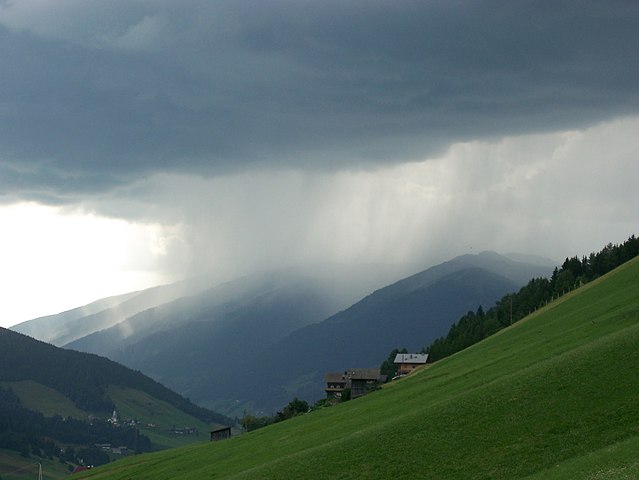 By Thomas K By Jo Nova Despite twenty years of media stories telling us how every rain-bomb was “climate change” a new satellite study of rainfall suggests that in the last 20 years the intensity of rainfall has mysteriously declined a little in most places. This is despite predictions it would increase, and CO2 itself rising by 41ppm globally during the same period. In terms of total emissions released by humans since the stone age, it’s been a bonanza — in this 20 year period we emitted 38% of all the emissions we ever emitted. So humans put out 656,000 Mt of CO2 and there’s been either a decline or no trend at all in rainfall intensity. Is 38% of all human CO2 emissions enough of a test? The satellites cover all the Earth, including the oceans which the met bureau gauges don’t. Thanks to Kenneth Richards at NoTricksZone for finding this paper: New Study: 21st Century Precipitation Trends Have Become Less Intense GloballyHydrological processes were expected to intensify with warming. The opposite has happened. Per a new study, global precipitation intensity, measured in mm/hour per century, has exhibited flat (large precipitation systems) to declining (medium and small systems) trends from 2001 to 2020.
Nearly every which way we look at it, across the year, on different continents in different seasons, rainfall intensity is not getting worse. Small and medium size “precipitation systems” (red and yellow) have reduced in intensity in summer and winter and all over the globe. More widespread systems (green) are a wash with some up and some down, and none of it in a pattern that climate models predicted. 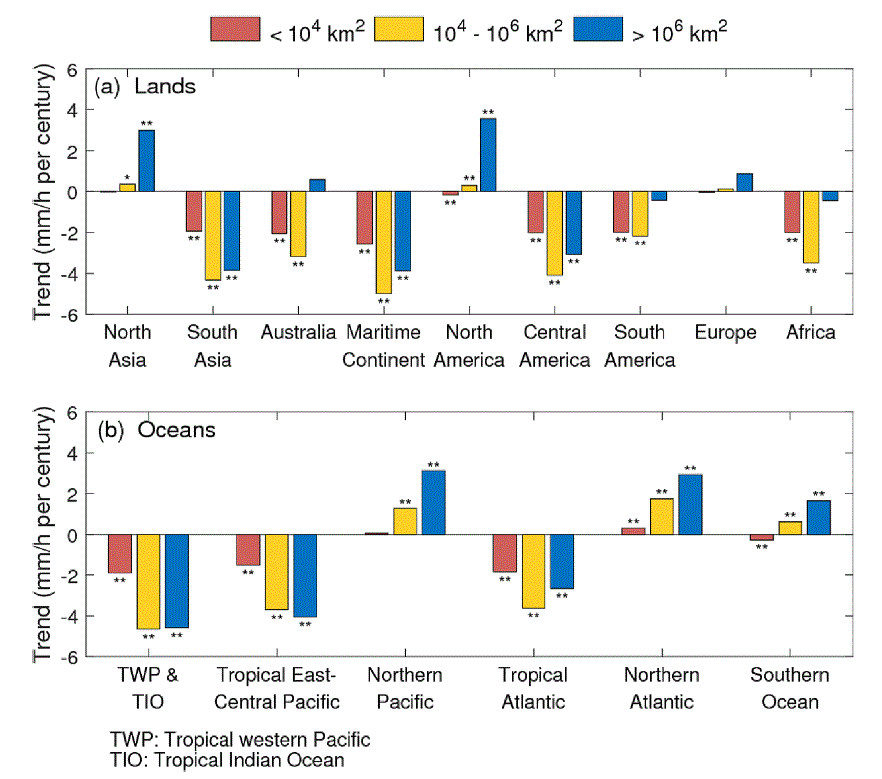 Fig. 9. Trends (unit: mm/h per century) of the mean core-region precipitation intensity of precipitation systems categorized by different precipitation system sizes at the annual timescale in (a) nine continental regions and (b) six oceanic regions during the 2001–2020 period. * and ** denote the 0.1 and 0.05 significance levels, respectively. This is really quite complete. Small and medium size “precipitation systems” have reduced in intensity in summer and winter and all over the globe. And larger weather systems have “done nothing much”. 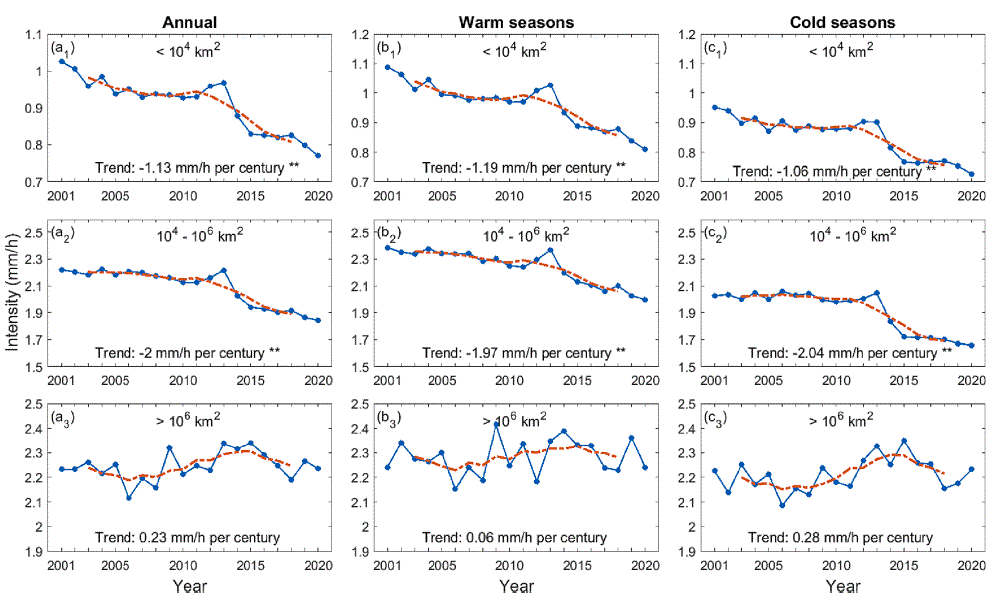 Fig. 8. Time series of the mean core-region precipitation intensity (in blue) of precipitation systems categorized by different precipitation system sizes (a1-3) at the annual scale and in (b1-3) warm seasons and (c1-3) cold seasons during the 2001–2020 period. The mean core-region precipitation intensity is calculated by the mean values of all the precipitation systems with different sizes during the study period. The 5-year moving average (in red) is also shown. Trends are calculated and shown, and * and ** denote the 0.1 and 0.05 significance levels, respectively. And if there is a climate change signal hidden under a declining natural trend, the problem is that those other mysterious forces are more powerful than CO2, yet we have no idea what they are or how to predict them. Call it climate-poker. Would you like to bet your national economy on these models? This well established theory is going swimminglyThe UN experts are certain that rain will become more intense over most land regions. Listen to the peer reviewed science. It’s all simple really… ScienceBrief Review: Climate change increases extreme rainfall and the chance of floodsTheory It is well established that the frequency and intensity of extreme rainfall increases more strongly with global mean surface temperature than does mean rainfall (Berg et al., 2013; Myhre et al., 2019) as the latter is limited by evaporation, whilst changes in extremes are also affected by local in-storm processes. In simple terms, warmer air can hold more water vapour that can subsequently fall as rain. For each degree of warming, the air’s capacity for atmospheric water vapour increases at about +6% to +7% per degree of warming, assuming other atmospheric conditions remain roughly constant, known as Clausius-Clapeyron scaling (Allan et al., 2014). A warming atmosphere with more moisture can therefore produce more intense rainfall events, with this scaling providing a first approximation (Fowler et al., 2021a)… Future projectionsRelatively coarse-scale global climate models show future increases in daily rainfall extremes over most land regions with warming (Seneviratne & Hauser, 2020; Coppola et al., 2021a)…. This ScienceBrief Review is consistent with the IPCC Special Report on 1.5 degrees (2018) Chapter 3 and Special Report on Climate Change and Land (2019) Chapter 4, both of which noted that human-induced global warming has already caused observed increases in frequency, intensity and/or amount of extreme rainfall in several regions. There’s a consensus — it can’t be wrong. Keep reading → By Jo Nova Don’t mention brown coal?Last quarter I reported that the Australian Energy Market Operators (AEMO) had strangely “forgotten” to list the brown coal prices in its quarterly report, despite it being the second largest energy source in our national electricity market. Other quarters, often they would include a graph comparing the average winning bids of all the major fuel types — a graph that surely is essential in these inflationary times where our electricity prices are setting record highs, rising by 25% this month, and we have a national debate on our energy crisis. In the next quarterly report the AEMO did list the average “winning bids” of brown coal but didn’t do the comparison graph, so I’ve done it for them. If only they had room in their 68 page report and $450 million dollar budget so Australians can see, at a glance, which fuel source provides the cheapest wholesale generation by far, every quarter, all the time? Despite all the inflation, the war, and the pandemic, brown coal generators are still making electricity for 3c a KWh. Shouldn’t Australians know that? 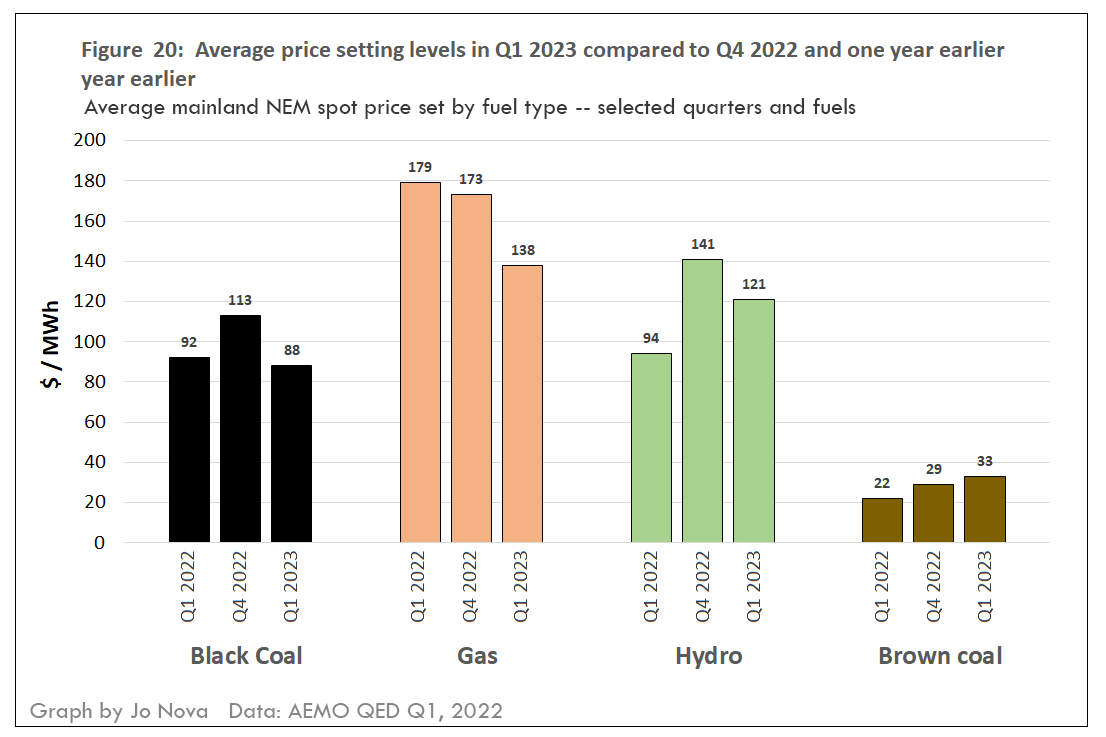 Click to enlarge (Or download the larger JPG file) Compare that to current retail electricity prices in our renewables superstar state South Australia — where the cost varies from 33c to 47c per kilowatt hour. Brown coal doesn’t “set” the winning bid as often as it used to when it was a larger proportion of our generation mix. Obviously, if it did, we’d have cheaper electricity. The prices for solar and wind power were the nonsensical minus $24 and minus $41/ MWh. They’re not included because they are not despatchable, and most of the costs of the unreliables are hidden in subsidies. When we spend $20 billion on pumped hydro and transmission lines, those costs, like the batteries and demand schemes should be added to the wind and solar charges. When the rest of the reliable grid has to charge more to cover their costs of sitting around on “standby” — those higher costs should be added to the renewables bill too. Brown coal is a national asset because it is impervious to international dramas and conflicts. It can’t be shipped far because it has a habit of catching fire on the boat, so there is no international market, instead we have hundreds of years of supply all to ourselves. The more we use, the more black coal and gas we can make billions of dollars with. Instead of being a renewable energy superpower, we could be a cheap energy superpower. Australia made $124 billion dollars in export revenues from black coal last yearImagine a world where Australian electricity prices were cheap again and industries moved here from all over the world. With the extra funds Australian families could afford laptops, music lessons, books and adventure camps for every child, or trips to the Whitsundays, Ningaloo, whatever turned them on. Parents might not have to work two jobs. What a life of riches we gave up so easily, with so little thought, because we were badgered and bullied into a futile quest to change the weather? As it is, here in the Renewable Land, the Australian Labor Party has decided not to even talk about coal in its party platform, despite it being our second largest export industry. President Xi, Larry Fink, the WEF and the UN will be happy. REFERENCEThe AEMO Quarterly Energy Dynamics (QED) reports
Across 30 countries heatwaves kill 20,000 people in European cities every year (and cold kills 200,000 but nevermind.) The new paper by Pierre Masselot et al, is another round of medical investigation showing cold is somewhere between six and twenty times as deadly as heat is. Other studies looked at various countries, or specific regions. This study looked at cities across the whole of Europe. It was pretty big, covering 854 cities of 50,000 or more, and about 40% of the European population. They picked cities because they are “particularly affected by environmental stressors and potential impacts of climate change”. So they’re admitting they looked at the worst possible living conditions for heat deaths. Obviously cities will be hotter than farms and ski resorts — so if heat deaths were a problem, this study would show it, except it didn’t. Nobody mention coal, oil or gas…Mysteriously Northern people in frigid climates were strangely “adaptable” to the cold compared to people in Eastern Europe. What could it be that helps people in Scandinavia deal with the cold so much better than people in Bulgaria? Northern countries showed the lowest risks for heat but also relatively low vulnerability to cold given the much higher exposure to low temperatures, suggesting an adaptive capacity to rigid cold climates, especially when compared with countries in the eastern region. The authors have many suggestions, none starting with f or rhyming with “cruel”: The disparities observed in vulnerability to heat and cold could be associated with a number of factors, including the local climate, urban heat island effects, access to health care, or land cover (eg, the accessibility of water or trees). Previous studies have found associations between vulnerability to heat and green areas, PM2·5, population density, or economic inequalities. Giving an insight into academic mindsets, if not into mortality, the paper mentions socioeconomic 14 times, but does not use the words “fossil”,”fuel”,”electricity” or “affordability”. And they don’t discuss air conditioning either. Apparently wealthy people just wrap themselves in socioeconomic blankets to stay warm or something like that. Maybe they have more pot plants to reduce the PM2.5s?
Masselot and co don’t seem to be aware that air conditioners save around 20,000 lives a year in the US, and also reduce formaldehyde and possibly mercury and indoor air pollution, and that heat deaths in Spain have been trending down since air conditioning was invented. Likewise, some estimates suggest global warming saves 166,000 people every year. If only they were peer reviewed by unfunded bloggers…
The authors, also don’t mention indoor temperatures or insulation. Presumably they don’t party with engineers very often — probably to the relief of the engineers.
Big-Government killed scienceSo this is modern “peer reviewed” science, packed with data, published in a supposedly “great” journal but speaking nonsense, and seemingly avoiding the obvious conclusions at every step. In 2015 the giant Gasparrini paper showing that among 74 million people, cold kills 20 times as many people as heat does. But the government monopoly stranglehold is so strong these researchers cite that paper with no mention of the astronomical numbers — saying just that it “shows heat and cold are well established health risk factors.” Oh yes indeedy. They follow that with the ritual nonsensical incantation: ” The associated health burden is expected to increase with climate change.” How does that work in anyone’s head? Cold causes 95% of temperature related deaths but if we warm the world, more people will die? As usual the study was funded by organizations that spend trillions on policies to “cool” the world, yet the authors declare they have “no competing interests”. The study was funded by Medical Research Council of the UK (MR/V034162/1 and MR/R013349/1), the Natural Environment Research Council UK (NE/R009384/1), the EU’s Horizon 2020 (820655), and the EU’s Joint Research Center (JRC/SVQ/2020/MVP/1654). AU and JK were supported by the Czech Science Foundation (22–24920S). The numbers: Across the 30 countries, we estimated an annual average excess of 203 620 (empirical 95% CI 180 882 to 224 613) deaths due to cold and 20 173 (17 261 to 22 934) due to heat, which amount to attributable fractions of 7·01% (6·23 to 7·73) and 0·69% (0·59 to 0·79), respectively. REFERENCESMasselot et al (2023) Excess mortality attributed to heat and cold: a health impact assessment study in 854 cities in Europe, The Lancet, DOI:https://doi.org/10.1016/S2542-5196(23)00023-2 Antonio Gasparrini et al. (2015) Mortality risk attributable to high and low ambient temperature: a multicountry observational study. The Lancet, May 2015 DOI: 10.1016/S0140-6736(14)62114-0. Full PDF. Image by StockSnap from Pixabay By Jo Nova It’s just another climate denier with a Nobel Prize in Physics…Dr John F Clauser of quantum entanglement fame, leaves no doubt about his thoughts: “…climate science has metastasized into massive shock-journalistic pseudoscience”. Despite that, the ABC and BBC types won’t pick up the phone to ask Dr John F Clauser why a man with his remarkable reputation would risk looking like an idiot, and speaking up as a climate skeptic. It’s not that they are afraid he might bore the audience or sound like a kook. They won’t ask him because they’re afraid he’ll have a good answer. How much damage would it do to the cause if the audience finds out that one of the highest ranking scientists in the world disagrees with the mantra? It would break that sacred spell. Suddenly, the unwashed masses will realize “there is a debate”, and that all the times they were told “the debate was over”, they were being lied too. The same team that tells us that we must “listen to the experts”, won’t listen to any experts they don’t like. They rave about “UN Experts” that hide the decline, but run a mile to avoid the giants of science. They’ll ask high school dropouts about climate change on prime time TV before they interview the Nobel Prize winners. It’s a lie by omission. It’s active deception. And the whole climate movement is built on it. The thing about skeptical Nobel Prize winners is that they make the namecalling “climate denier” program look as stupid as it can get. Nobel Laureate: “Climate science has metastasized”Thade Andy, RIPT: Dr. John F. Clauser, joint recipient of the 2022 Nobel Prize in Physics, has criticized the climate emergency narrative calling it “a dangerous corruption of science that threatens the world’s economy and the well-being of billions of people.” Along with two others, Dr Clauser, an experimental and theoretical physicist, was the 2022 recipient of the Nobel Prize for work done in the 1970s that showed “quantum entanglement” allowed particles such as photons, effectively, to interact at great distances, seemingly to require communication exceeding the speed of light. The CO2 Coalition issued a statement when Clauser joined their board of directors in May. His studies of the science of climate provide strong evidence that there is no climate crisis and that increasing CO2 concentrations will benefit the world,” said Dr. William Happer, chair of the board of the CO2 Coalition. According to Dr. Clauser, …” In turn, the pseudoscience has become a scapegoat for a wide variety of other unrelated ills. It has been promoted and extended by similarly misguided business marketing agents, politicians, journalists, government agencies, and environmentalists. In my opinion, there is no real climate crisis. There is, however, a very real problem with providing a decent standard of living to the world’s large population and an associated energy crisis. The latter is being unnecessarily exacerbated by what, in my opinion, is incorrect climate science.” Other Nobel Prize winning skeptics in Physics include Ivar Giaever who won a Nobel for tunneling in superconductors in 1972, and Robert Laughlin who won the 1998 Physics Nobel Prize for his explanation of the fractional quantum Hall effect. Climate skeptics not only outnumber believers but they outrank them too — not that point-scoring in the pagan consensus battle tells us what the truth is. The point of telling the world about prizewinning skeptics is to expose the mass media propaganda campaign and the hypocrisy of their sacred cows. h/t Eduard H, Jim Simpson, Helen D, Willie Soon. Photo by Peter Lyons
|
||||
|
Copyright © 2024 JoNova - All Rights Reserved |
||||

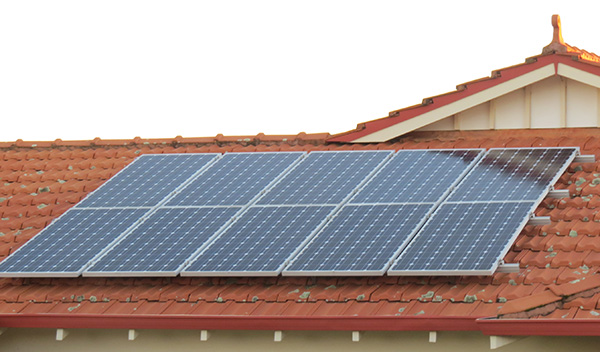


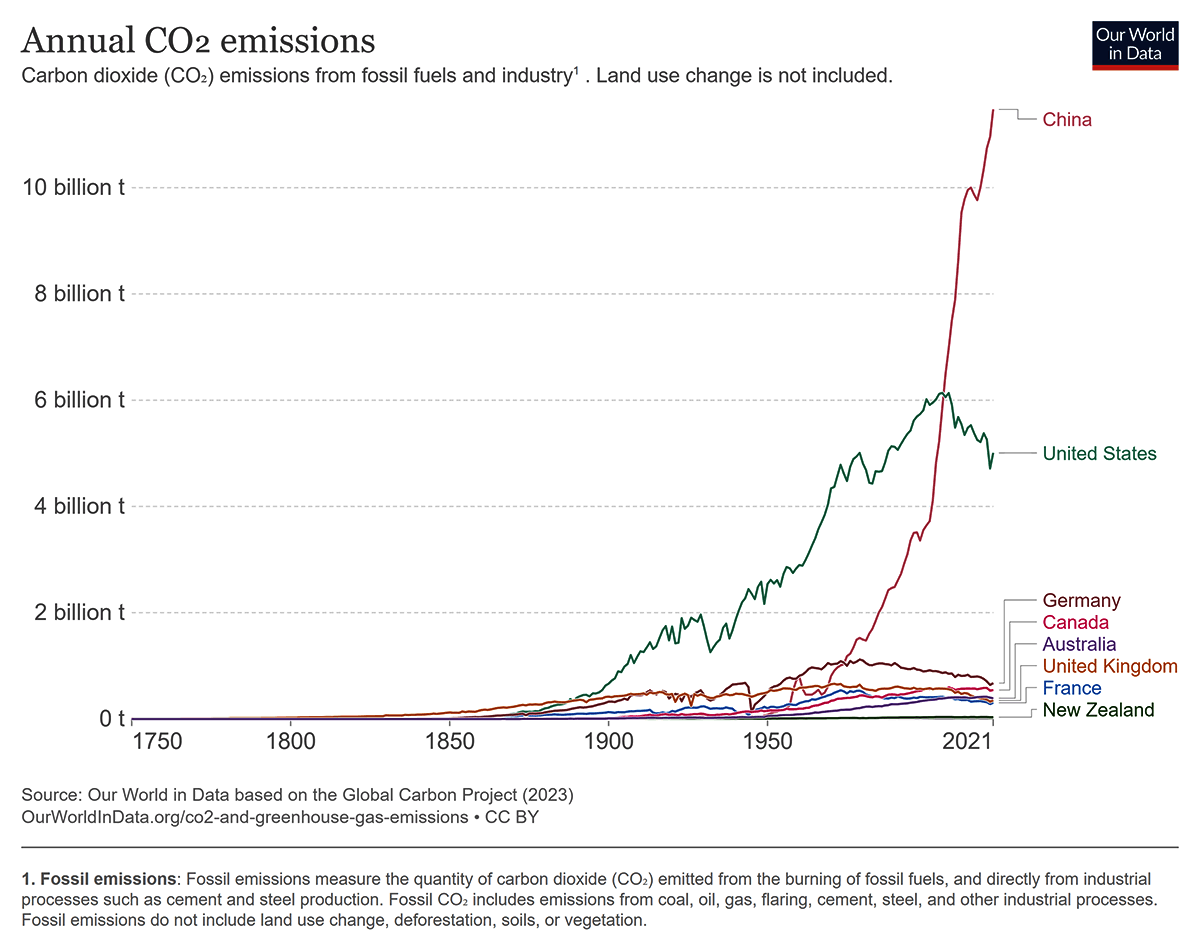
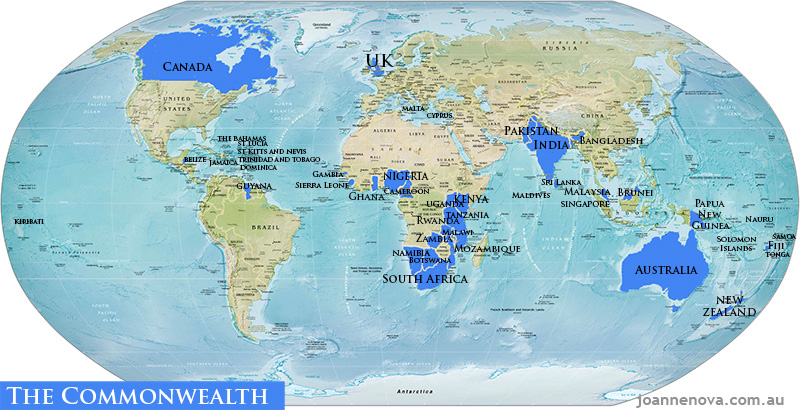
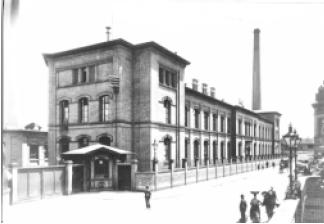


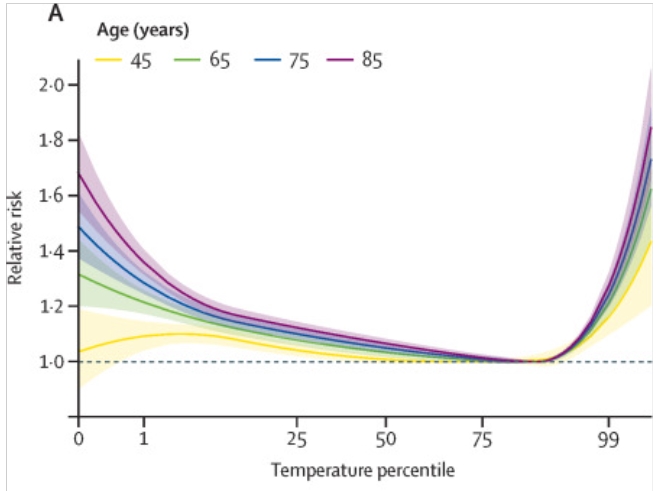












By Jo Nova
Is the Commonwealth Games just another target of the Culture Wars?